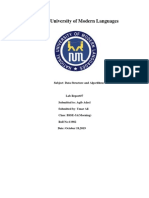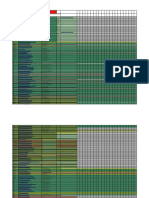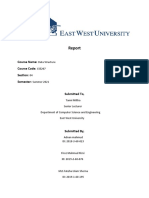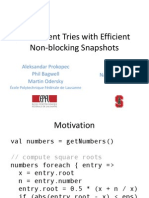0% found this document useful (0 votes)
104 views16 pagesLab Assigment Data Structure
The document contains 8 questions and solutions related to data structures and algorithms using C++. Question 1 involves storing temperature data of two cities over a week in a 2D array and displaying it. Question 2 stores user input values in a 3D array and displays it. Question 3 swaps the first and last elements of a 1D integer array. Question 4 demonstrates pushing elements onto a stack implemented using an array. Question 5 transverses a stack using an array. Question 6 displays the nodes of a linked list implemented using an array. Question 7 inserts a node at a particular position in a linked list. Question 8 deletes the last node of a linked list.
Uploaded by
Pankaj KohliCopyright
© © All Rights Reserved
We take content rights seriously. If you suspect this is your content, claim it here.
Available Formats
Download as ODT, PDF, TXT or read online on Scribd
0% found this document useful (0 votes)
104 views16 pagesLab Assigment Data Structure
The document contains 8 questions and solutions related to data structures and algorithms using C++. Question 1 involves storing temperature data of two cities over a week in a 2D array and displaying it. Question 2 stores user input values in a 3D array and displays it. Question 3 swaps the first and last elements of a 1D integer array. Question 4 demonstrates pushing elements onto a stack implemented using an array. Question 5 transverses a stack using an array. Question 6 displays the nodes of a linked list implemented using an array. Question 7 inserts a node at a particular position in a linked list. Question 8 deletes the last node of a linked list.
Uploaded by
Pankaj KohliCopyright
© © All Rights Reserved
We take content rights seriously. If you suspect this is your content, claim it here.
Available Formats
Download as ODT, PDF, TXT or read online on Scribd
/ 16






















































































